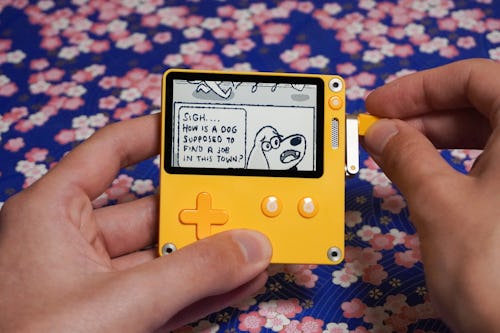
Truly new things don’t come around very often.
It feels unintuitive to say — there’s a new streaming show every week, millions of games published to Steam and Itch every day, and plenty of new YouTube videos to fill the time in-between — but hardware is different. It’s harder.
Panic, long-time purveyor of fine Mac software and recent game publisher (Firewatch, Untitled Goose Game, and Nour), has pulled off something extraordinary on paper. It launched a genuinely refreshing, $179 video game handheld that has a physical crank during a pandemic and a chip shortage. It’s called the Playdate; it’s designed in partnership with the talented minds at Teenage Engineering; and I’m overjoyed to say it’s as charming and cute as its marketing makes it out to be.
The Playdate feels old, new, a little bit expensive, and a little too hard to actually get, but it brings me a lot of joy, and I think it might do the same for you too.
Input may receive a portion of sales if you purchase a product through a link in this article. We only include products that have been independently selected by Input's editorial team.
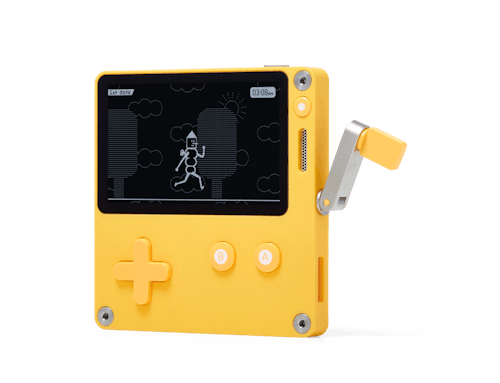
Nintendo charm
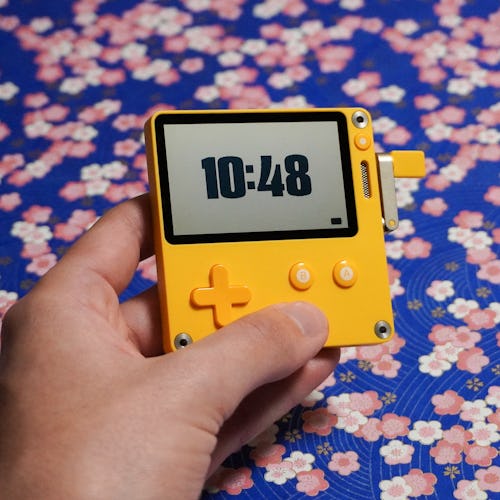
Yellow. That’s the first thing I think of when I look at the Playdate. “Yellow” and then a few seconds later, “crank.” Panic and Teenage Engineering have leveraged a powerful bit of industrial design for the Playdate. It’s not just that the device has a distinct profile — though it does, especially with the crank popped out — it just feels tremendously like itself, which is strange considering how much it seems inspired by the handhelds that came before it.
Inputs —
On the front of the little yellow handheld, there’s a directional pad (very clicky), A and B buttons (also surprisingly clicky), and a home button on the top right (this also opens up a menu for controlling the volume, taking a screenshot, and more depending on the app). The layout is clearly Game Boy-inspired and like Nintendo’s classic handheld, offers more than enough inputs for most types of games.
On the top, there’s a lock button (you press it once to lock the device, and twice to unlock it) and on the bottom, there’s a stereo headphone jack and USB-C charging port. The left side is blank and the right? It has a crank.
The crank is the odd input method that differentiates the Playdate from just about everything else.
The crank is the odd input method that differentiates the Playdate from just about everything else. Panic is clearly proud of it too, to the point where there are custom sound effects for both removing the crank and putting it back into its dedicated slot.
Sometimes the crank is used as another way to scroll through menus, other times its ability to “stop on a dime” offers fine control in more challenging games like Whitewater Wipeout, one of two games available when you first turn on your Playdate. The crank may very well be written off as a gimmick, but it’s certainly an interesting one, and I hope developers find unique ways to use it.
Internals —
The third thing that really stands out about the Playdate (reminder: yellow and crank are the previous two) is the black and white screen. Panic is using a “1-bit,” 400 x 240 resolution screen that’s reflective, but not backlit. It looks best in sunlight, and better at certain angles because of its reflectiveness, but when you get things just right, everything on the little screen pops.
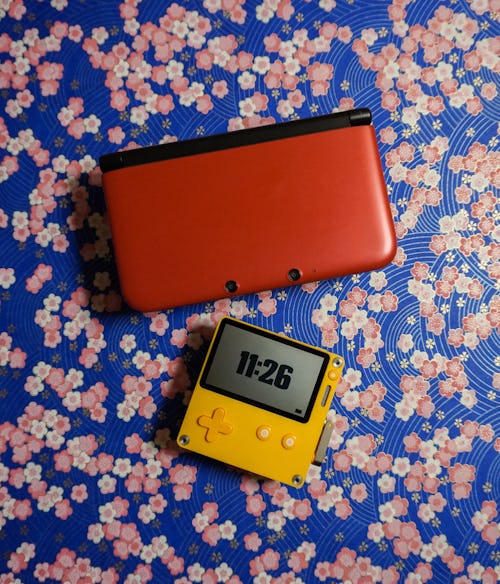
I think a lot of the technical choices Panic made — with the screen being the most glaring — are more playful limitations than anything else. Things that might look bad on paper compared to an OLED Nintendo Switch, but are actually fine in context. Here are some of the other key specs:
- 14 hours of standby “clock” battery (8 hours of active battery)
- 168MHz Cortex M7 chip
- 16MB of RAM
- 4GB of flash storage (games are tiny, don’t worry)
- Mono speaker
- Microphone
- Bluetooth
- 802.11 b/g/n 2.4GHz Wi-Fi
The Playdate is not exactly a powerful device. Still, it very deliberately needs you to design for it in mind, which turns what look like 2022 shortcomings into possible strengths in the right developers’ hands.
The Experience —
Overall, the Playdate feels great to hold. It’s boxy and pretty darn solid, with prominent silver screws, just one of several tasteful uses of metal throughout the device. Panic sells a companion cover for an extra $29 that comes in a complementary purple, with pins and magnets so it snaps on the back. There’s also a Bluetooth speaker dock coming at some point in the future too.
For only offering a single-mono speaker, the Playdate gets fairly loud, and sounds surprisingly crisp. You obviously won’t get surround sound or really any kind of deep bass, but there’s always the headphone jack if you want a slightly more immersive sound experience. The company is promising some kind of wireless audio support via a software update later, but couldn’t share more details.
Every opportunity Panic found to do something special, it took it.
Battery life is true to Panic’s claims, maybe even a bit longer just taking standby time into consideration. I was able to charge my Playdate overnight on a Sunday, wake up on Monday with new games, unplug, and make it till Thursday before I worried about the battery. Panic claims the device gets eight hours of active battery, but in my experience, I didn’t end up playing any Playdate game for even as long as an hour in just one sitting. It’s best enjoyed in short bursts I think.
Overall, the whole package feels incredibly considered, maybe even over-considered. It really seems like every opportunity Panic found to do something special, it took it. That means the Playdate is full of delightful aesthetic flourishes in its hardware and software, but it’s also a lot. There are rough edges, too. My Playdate cover seems slightly longer on one side than the other, and my Playdate has the slightest creak if I press down too hard on the left side.
Even with some first-generation roughness, I have to say it’s all worth it. As soon as I picked the device up it immediately made sense to me. This little thing wants to live in your pocket or bag. And it’s pretty damn fun to play too.
Crankin’ it

However charming, the Playdate is only as good as its games, and Panic has come up with a compelling way to get you to try a bunch of different ones over time. Included with the $179 handheld is a “season” of games curated by Panic, delivered weekly like a TV show.
Season 1 —
The company originally planned for this season to be released simultaneously to every Playdate owner, but pandemic-related shipping and manufacturing issues now mean your season starts when you turn on your handheld for the first time. Turn on the Playdate and it’ll automatically download two games — Casual Birder and Whitewater Wipeout — and then do the same thing every Monday until you have all of the 24 games in the first season. It’s a lovely idea, and assuming you like the variety of developers that Panic has reached out to (including indie game luminaries like Samantha Kalman, Zach Gage, Lucas Pope, and more) there’s a lot to discover.
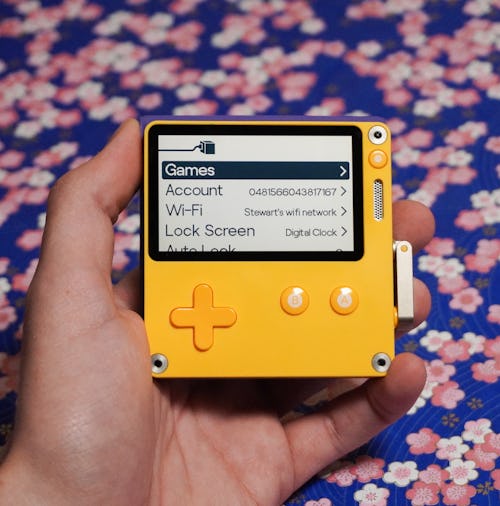
User interface —
The games are the centerpiece of Playdate OS as it exists today. Unlock the handheld and you’ll be presented with a list starting with your newest games, then your older ones, before any application you’ve sideloaded (more on that in a bit), and the Settings app. It’s clean and simple and you can scroll through it with the crank or the directional pad.
Downloading games —
Around when Panic finally shipped its first Playdate, the company shared that it was working on a storefront app, called “Catalog,” for developers to use to sell games. The idea being that a second season of games (if it happens at all) would take time, and Panic wants a way to get developers in front of Playdate owners hungry for more things to crank. Besides a few screenshots and promises to share more, Panic hasn’t revealed much. But the current method of getting games from other storefronts onto the handheld works surprisingly well.
Easy sideloading makes the Playdate open to any game you buy from a third-party marketplace (Itch.io currently being the most Playdate-friendly) as long as the file ends in the official “.pdx” file format; this is a refreshing comparison to Apple and Google's gated app stores, and only makes the handheld more attractive to homebrewers and tinkerers. Take your Playdate game file to Panic’s dedicated sideloading webpage and you can download the game right to your handheld wirelessly, or connect your Playdate with the USB-C cable that came with it in the box and drag and drop files onto it that way.
That cable also comes in handy for using a free Playdate Mirror app to display your Playdate games to your computer screen (this makes streaming easier and opens up more accessibility options) and using your device to develop your own Playdate games.
Week 1
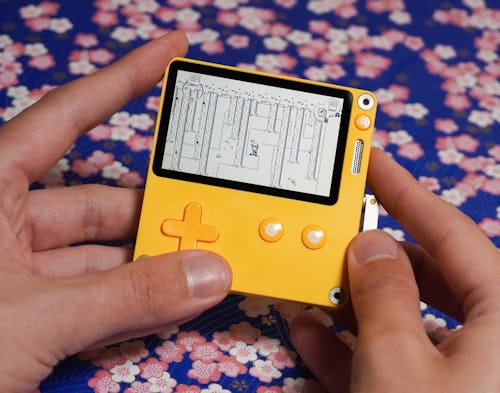
Part of the joy of the Playdate is experiencing the games week by week, so in order to not lose that sense of surprise, I’m only going to speak about the first two games in Panic’s first season, with the plan being to follow up weekly as new games land on my personal Playdate.
Whitewater Wipeout

Harkening back to California Games, a sports game collection I’m admittedly only aware of because I’ve seen older games journalists mention it, Whitewater Wipeout is a surfing game that’s all about timing and aiming your board just-so with the crank. You crank to steer (waggling up and down builds momentum) and spin your crank in circles once you crest a wave to do tricks, all in the hopes of getting a high score and not wiping out.
This game is surprisingly hard as one of the first experiences to unlock on the Playdate, and maybe offers diminishing returns if you’re not motivated to chase high scores. But it’s a great illustration of the specific peculiarities of the crank, so it makes sense as Playdate training wheels.
Casual Birder

Pokémon Snap crossed with a Game Boy RPG, Casual Birder is mostly about filling out a bird Pokédex, but the charming weirdness of the game’s setting, Bird Town, and the very modern sense of humor sprinkled throughout the dialogue makes Casual Birder a great narrative experience to dig into. You play, solving puzzles by taking pictures of birds (and other things), giving items to people, and generally indulging in adventure game logic. The crank plays more of a supporting role in comparison to Whitewater Wipeout. Cranking scrolls through your inventory of items and pulls focus on photos when you whip out one of the game’s many cameras (you start taking pictures with a cellphone, which yes, also has a crank).
Casual Birder manages to sneak in some nice themes about exploring new interests, and how hardcore fans often keep newcomers out of an industry, fandom, or interest group. There was only one puzzle I had to look up the answer to, which I think means Casual Birder is a pretty well-rounded three or so hour experience.
On cranking —
Based on the two games available on the Playdate when you first turn it on and the two more I received after playing with it for a week, I don’t think I can make a definitive case for the crank as the great new input method. Now, I wouldn’t describe it as a gimmick, either, there have already been some creative uses, and I suspect third-party developers will come up with even more. The crank doesn’t detract from any of the games that use it, because in some cases it’s critical. Just don’t buy a Playdate for the crank alone.
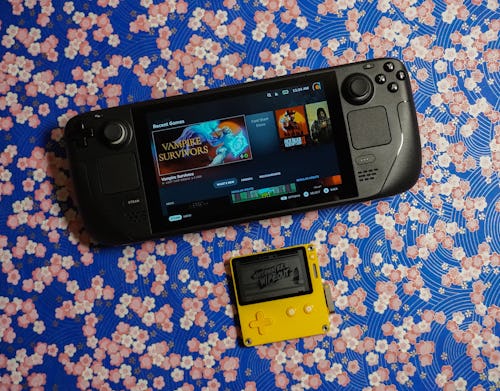
What makes the Playdate exciting sits at the intersection of both its hardware and software. And Panic’s selection of games seems to mirror what you might see on a handheld or mobile device. There’s puzzle games to chip away at over time, repeatable high-score chasing action titles, and RPGs that unfold longer narratives over multiple play sessions. I haven’t run into anything that’s going to rival a 60+ hour experience like Elden Ring, but I also don’t think anyone should be coming to a device like this looking for that. Many of the Playdate’s games offer more meat on their bones than their short lengths might suggest, and when they don’t, you don’t have long to wait until more arrive.
The Future
There’s a lot of uncertainty involved with the Playdate, not just in the hardware itself — Panic says Playdate units ordered now will likely ship sometime in 2023 — but also whether it makes sense as a handheld to invest in without the promise of ongoing support from its creators.
Panic seems intent on making the Playdate work for now. What’s not clear is whether or not developers will take up the mantle and keep making games for the little device before a second season of games arrives.
The Playdate is from a world where video games aren’t dominated by the three big consoles.
Offering a store is a great start, and letting users sideload whatever games they want is, in some ways, even better. But at $179, I understand how the Playdate could be too risky and expensive for some. What I like most about the Playdate is not whether or not it will have great games, but that it’s a new, more open video game console than pretty much anything else out there, and that it’s nice and charming enough that indie developers might consider making games for it.
The Playdate is from a world where video games aren’t dominated by the three big consoles, the PC marketplace, and mobile. A world that’s weirder, more playful, and (depending on what Panic ultimately charges developers to sell games) offers a better deal for smaller teams of game makers trying to get by. There’s nothing but good faith to suggest it could ever be more than a one-and-done thing. But I want to believe, and worst-case scenario, I get the feeling I’m going to have an eclectic little library of games to crank my way through in the meantime.







